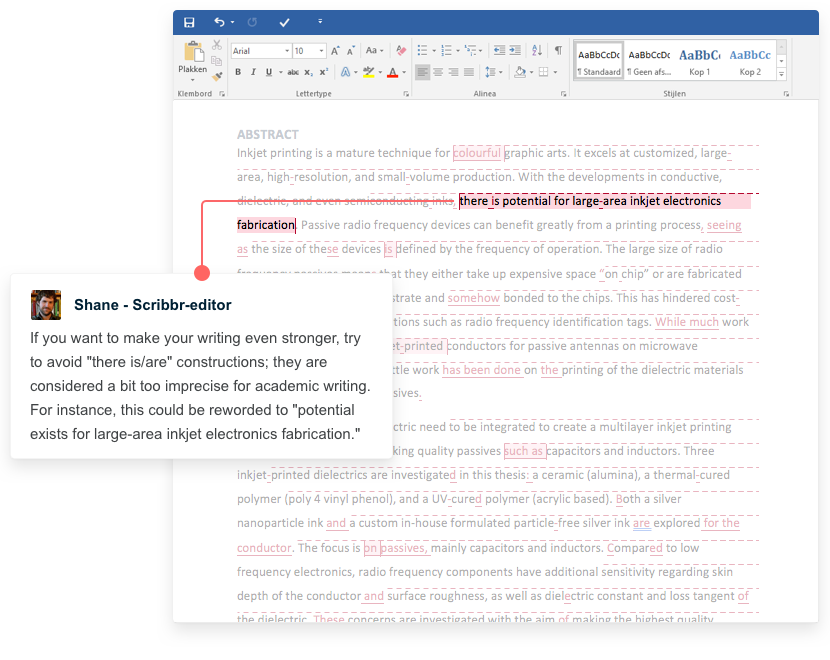MLA In-text Citations | A Complete Guide (9th Edition)
An MLA in-text citation provides the author’s last name and a page number in parentheses.
If a source has two authors, name both. If a source has more than two authors, name only the first author, followed by “et al.”
If the part you’re citing spans multiple pages, include the full page range. If you want to cite multiple non-consecutive pages at the same time, separate the page numbers with commas.
| Number of authors | Example |
|---|---|
| 1 author | (Moore 37) |
| 2 authors | (Moore and Patel 48–50) |
| 3+ authors | (Moore et al. 59, 34) |
Each in-text citation must correspond to a full reference in the list of Works Cited. You can create and save your citations with Scribbr’s free MLA Citation Generator.
Generate accurate MLA citations with Scribbr
Where to include an MLA in-text citation
Place the parenthetical citation directly after the relevant quote or paraphrase, and before the period or other punctuation mark (except with block quotes, where the citation comes after the period).
If you have already named the author in the sentence, add only the page number in parentheses. When mentioning a source with three or more authors outside of parentheses, use “and others” or “and colleagues” in place of “et al.”
- MLA is the second most popular citation style (Smith and Morrison 17–19).
- According to Smith and Morrison, MLA is the second most popular citation style (17–19).
- APA is by far “the most used citation style in the US” (Moore et al. 74), but it is less dominant in the UK (Smith 16).
- Moore and colleagues state that APA is more popular in the US than elsewhere (74).
Combining citations
If a sentence is supported by more than one source, you can combine the citations in a single set of parentheses. Separate the two sources with a semicolon.
Livestock farming is one of the biggest global contributors to climate change (Garcia 64; Davies 14).
Consecutive citations of the same source
If you cite the same source repeatedly within a paragraph, you can include the full citation the first time you cite it, then just the page number for subsequent citations.
MLA is the second most popular citation style (Smith and Morrison 17–19). It is more popular than Chicago style, but less popular than APA (21).
You can do this as long as it remains clear what source you’re citing. If you cite something else in between or start a new paragraph, reintroduce the full citation again to avoid ambiguity.
Citing sources with no author
For sources with no named author, the in-text citation must match the first element of the Works Cited entry. This may be the name of an organization, or the title of the source.
If the source title or organization name is longer than four words, shorten it to the first word or phrase in the in-text citation, excluding any articles (a, an, and the). The shortened title or organization name should begin with the word the source is alphabetized by in the Works Cited.
Follow the general MLA rules for formatting titles: If the source is a self-contained work (e.g. a whole website or an entire book), put the title in italics; if the source is contained within a larger whole (e.g. a page on a website or a chapter of a book), put the title in quotation marks.
| Full source title or organization name | In-text citation |
|---|---|
| Amnesty International Report 2017/2018: The State of the World’s Human Rights | (Amnesty International Report 187) |
| “Sources of Greenhouse Gas Emissions” | (“Sources”) |
| “A Quick Guide to Proofreading” | (“Quick Guide”) |
| National Academy of Sciences and the Royal Academy | (National Academy 24) |
Citing sources with no page numbers
If a source does not have page numbers but is divided into numbered parts (e.g. chapters, sections, scenes, Bible books and verses, Articles of the Constitution, or timestamps), use these numbers to locate the relevant passage.
If the source does not use any numbering system, include only the author’s name in the in-text citation. Don’t include paragraph numbers unless they are explicitly numbered in the source.
| Source type | What to do | Example |
|---|---|---|
| Source divided into numbered parts | Add a comma after the author and give a paragraph, section, or chapter number with a relevant abbreviation. | (Luxemburg, ch. 26) |
| Play with numbered lines | Include the act, scene, and line numbers, separated by periods, instead of a page number. | (Shakespeare 1.2.95) |
| Audiovisual source | Include the time range as displayed in the media player. | (Wynn 10:23–45) |
| Source with no numbered divisions | Include only the author’s name (or, if there is no author, the shortened title). | (Rajaram) |
Note that if there are no numbered divisions and you have already named the author in your sentence, then no parenthetical citation is necessary.
Citing different sources with the same author name
If your Works Cited page includes more than one entry under the same last name, you need to distinguish between these sources in your in-text citations.
Multiple sources by the same author
If you cite more than one work by the same author, add a shortened title to signal which source you are referring to.
(Butler, “Performative Acts” 522)
In this example, the first source is a whole book, so the title appears in italics; the second is an article published in a journal, so the title appears in quotation marks.
Different authors with the same last name
To distinguish between different authors with the same last name, use the authors’ initials (or, if the initials are the same, full first names) in your in-text citations:
(J. Butler 27)
Citing sources indirectly
Sometimes you might want to cite something that you found quoted in a secondary source. If possible, always seek out the original source and cite it directly.
If you can’t access the original source, make sure to name both the original author and the author of the source that you accessed. Use the abbreviation “qtd. in” (short for “quoted in”) to indicate where you found the quotation.
In these cases, only the source you accessed directly is included in the Works Cited list.
Frequently asked questions about MLA in-text citations
- When do I need to include an MLA in-text citation?
-
You must include an MLA in-text citation every time you quote or paraphrase from a source (e.g. a book, movie, website, or article).
- How do I cite information from a footnote in MLA style?
-
Some source types, such as books and journal articles, may contain footnotes (or endnotes) with additional information. The following rules apply when citing information from a note in an MLA in-text citation:
- To cite information from a single numbered note, write “n” after the page number, and then write the note number, e.g. (Smith 105n2)
- To cite information from multiple numbered notes, write “nn” and include a range, e.g. (Smith 77nn1–2)
- To cite information from an unnumbered note, write “un” after the page number, with a space in between, e.g. (Jones 250 un)
- Are titles capitalized in MLA?
-
Yes. MLA style uses title case, which means that all principal words (nouns, pronouns, verbs, adjectives, adverbs, and some conjunctions) are capitalized.
This applies to titles of sources as well as the title of, and subheadings in, your paper. Use MLA capitalization style even when the original source title uses different capitalization.
Cite this Scribbr article
If you want to cite this source, you can copy and paste the citation or click the “Cite this Scribbr article” button to automatically add the citation to our free Citation Generator.
McCombes, S. (2024, March 05). MLA In-text Citations | A Complete Guide (9th Edition). Scribbr. Retrieved April 26, 2024, from https://www.scribbr.com/mla/in-text-citations/

